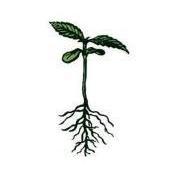-
Total de itens
10517 -
Registro em
-
Última visita
-
Days Won
23
Canadense's Achievements
-
Olá boa noite irmão. tudo na paz?
amigo saberia informar qual cera de abelha ou produtos que são adicionados no charasguaio? parar que ele fique com aquela consistência pastosa e com cheiro característico. Venho fazendo algumas remessas a partir do método de rick simpson usando o prensado comercial. Para não ficar somente aquele óleo grudento, que eu particularmente acho mais difícil de manusear e fumar que o hx mais consistente que nao tenho problemas com o beck entupindo. Aquele pelezinho que eh vendido em bolinhas na cidade. eu sei que não e o charas feito das raspas das mão de trabalhador de plantação, acho meio difícil cair nessa rsrs. Mas de toda maneira venho tentando imitar de certa forma essa formula. Nas extrações já usei a maioria dos solventes, tendo o melhor resultado com o hexano ( esse que causou um incêndio na minha casa rsrs ) e o pior com o álcool isopropílico, mas consegui um resultado satisfatório com alcool de cereais como principal solvente. Na ultima parte do processo adicionei glicerina e o "kief de prensado" o resultado foi um hax que não grudava nas mãos nem entupia mas ficou com característica de bubble, depois de muito curar ele começou a pegar consistência de cera mas demorou bastante e o produto não estava tao cheiroso. venho aqui contar essa historia toda para lhe pedir ajuda em seus conhecimentos canabicos em relação a quais produtos poderia usar para que ele fique mais parecido com o "charas". venho pesquisando e cheguei ate o cerume de abelha jataí e manteiga, tive pensando em tentar com amido de milho e fermento químico para que ele depois de finalizado seja levado a uma estufa elétrica para que seja evaporado o excesso de solvente que deixa o hax com gosto forte e de certa forma fazer com q o hx "cresça" e não fique aquela pasta que se esfarela facilmente, se possível gostaria de dicas de produtos alimentícios para deixar o fumo mais consistente e com qualidade de sabor no melhor estilo full mellt paraguaio rsrs. Agradeço desde já pois seus post ja me ajudaram bastante nos meus primeiros cultivos e extrações.
Abraços do Reegador!
-

Acho que você tá meio confuso brother. Estuda os tópicos de extração que vão te dar uma luz.
Rick Simpson não é hash, é óleo. É pra ingerir, não fumar. Embora seja possível fumar, o gosto não é bom.
Hash mesmo não é feito com solvente e nem com nenhuma dessas coisas que você falou.
Hash é só a resina pura e você extrai através de malhas.
Ou com dry sift (telas de silk) ou bubble hash (extração com água)
Quando o hash esfarela é porque tá mal feito e tem muita matéria vegetal.
-
-
apos dois anos... sativas ativadas
- Mostrar comentários anteriores %s mais
-

top top , tb to jogando umas sativas pra ver qual é
-

sativera na parada !!
-

Boa! Mandei ontem também minha sativinha de estimação pro solo que estava uns meses na água e carvão









.jpeg.6ba3ea076cd4bb42577fe94c6e1e1b73.thumb.jpeg.7daf0da9d3c3165c3b0bd47bb4e47cff.jpeg)



















